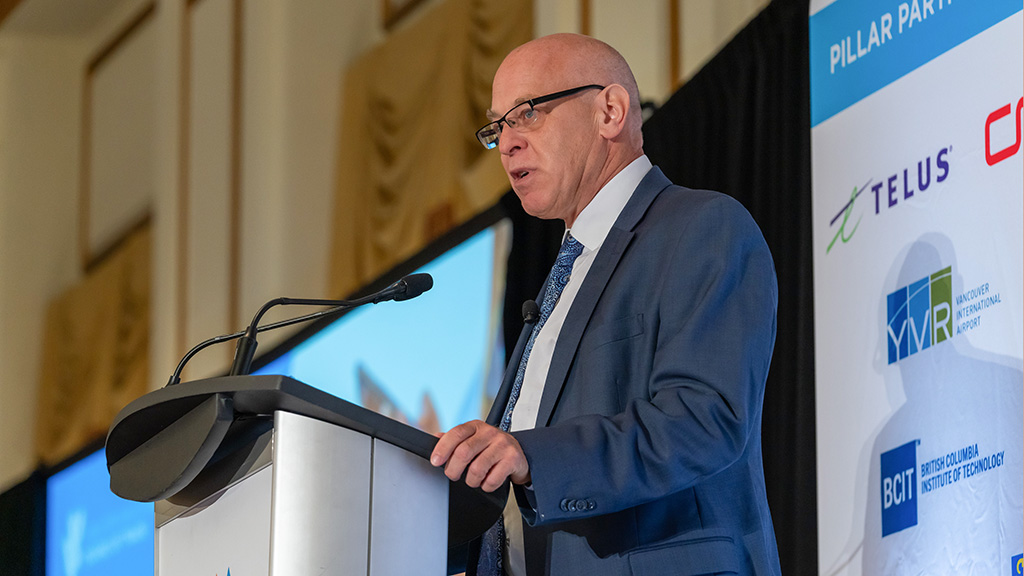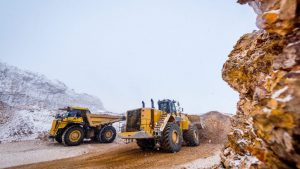║┌┴╧│╘╣╧═Ї needs to build more mines, pronto.
So says Pierre Gratton, president and CEO of the Mining Association of ║┌┴╧│╘╣╧═Ї (MAC).
In his speech to the Greater Vancouver Board of Trade earlier this month Gratton posed the question: How can ║┌┴╧│╘╣╧═Ї build more mines faster?
The need is driven by a World Bank prediction stating 500 per cent more minerals will potentially be needed by 2040, with about half that demand coming from electrical vehicles and battery storage.
тАЬLet me remind you of the sheer quantities of minerals and metals that are needed for the energy transition alone,тАЭ says Gratton.
The average electric vehicle battery contains about 185 kilograms of minerals, including lithium, cobalt, nickel, manganese, graphite, copper, iron and aluminum. ║┌┴╧│╘╣╧═Ї produces all of those minerals and also has large, untapped reserves, Gratton says.
тАЬYou canтАЩt do an energy transition without our products. ThereтАЩs a very strong case for ║┌┴╧│╘╣╧═Ї to be a key supplier,тАЭ he says.
But challenges exist.
The mining industry is sometimes painted as an environmental bad guy, where tailings ponds contaminate the wilderness, acid mine drainage destroys water sources and closed mines continue to pollute long after their decommissioning.
Gratton, MAC president since 2011, is addressing those perceptions.
тАЬMining is changing and has been changing for the better over the years,тАЭ he says. тАЬWeтАЩre a very different sector today. Customers buying mining products from ║┌┴╧│╘╣╧═Ї can have every confidence that they were mined responsibly, to the worldтАЩs highest standards, and with fewer greenhouse gas emissions than anywhere else in the world.тАЭ
Towards Sustainable Mining is one such program touted by Gratton. TSM, a mandatory part of MAC membership, assists mining companies with the management of environmental and social requirements. ItтАЩs the first mining standard in the world to require site-level reporting with external verification.
He also points to the mining industryтАЩs very active consultation with communities where mines, or proposed mines, exist.
тАЬWe have over 500 agreements with Indigenous communities and mines,тАЭ he says.
Impact Benefit Agreements that address issues such as employment, training and procurement have been embraced by ║┌┴╧│╘╣╧═ЇтАЩs mining industry.
But a shortage of people opting for work has to be handled, Gratton says.
The need is driven by not enough new workers entering the field to replace retirees, declining enrolment in post-secondary mining programs, a low mining unemployment rate (less than one per cent in July 2023) and difficulty attracting and retaining underrepresented groups. One goal is to have a 30 per cent female workforce, Gratton says.
In Saskatchewan, BHPтАЩs Jansen potash mine, wants to have a 50 per cent female workforce by the time the operation opens in 2026.
One further minefield is the double-barrelled regulatory/permitting landscape. It can take up to 15 years before a new mine is operational in ║┌┴╧│╘╣╧═Ї.
Hold-ups exist due to both provincial and federal regulations around natural resources, the environment and First Nations.
тАЬThereтАЩs a tremendous amount of duplication,тАЭ Gratton says.
While mining falls under provincial jurisdictions, the federal government is also involved due to legislation such as the Canadian Environmental Protection Act, 1999, Impact Assessment Act and Fisheries Act.
The federal government can be needlessly heavy-handed and arrogant, Gratton says.
тАЬWhy canтАЩt the federal government take a step back?тАЭ
A University of B.C. professor of mining engineering says starting a new mine is not getting easier and heтАЩs not optimistic about the future.
тАЬIt may even be harder to build a mine,тАЭ says Scott Dunbar. тАЬIn ║┌┴╧│╘╣╧═Ї, the deposits are good, but not that good. And theyтАЩre in difficult places.тАЭ
Often, mines are in remote locations, without roads, power and accommodation/services. To become operational, such infrastructure has to be built. The cost to create a working mine can range up to several billion dollars.
Sometimes, outlandish ideas are floated, such as a plan to use a dirigible airship instead of a road to move mine production, he says. The Hybrid Air VehiclesтАЩ Airliner 50 is said to carry a 50-tonne payload, with 30-metre cabin lengths and a 2,200 kilometre range.
As well, weather in northern ║┌┴╧│╘╣╧═Ї adds more costs. At a northwest B.C. mine, for example, there are huge water problems, compounded by very heavy snowfalls.
In northern Ontario, the much vaunted Ring of Fire is actually swamp/peat land, which, while it has rich deposits of nickel, copper, zinc and chromium, would be very difficult to access and mine. The area is also home to First Nations people who must be consulted.
And often what lies below the surface is based on an educated guess.
тАЬYou never know what you have till you open it up,тАЭ Dunbar says. тАЬItтАЩs a huge risk.тАЭ
He notes, compared to South America, ║┌┴╧│╘╣╧═ЇтАЩs mineral deposits are not as concentrated.
In Chile, the El Teniente copper mine, one of the worldтАЩs largest, produces copper thatтАЩs 0.62 per cent pure; B.C.тАЩs Highland Valley copper mine produces a product thatтАЩs 0.35 per cent pure.
Dunbar doesnтАЩt think the permitting/regulatory process is a big impediment, but he does agree many metals are needed for a non-fossil fuel future.
тАЬThe amount of metals needed for the energy transition is staggering,тАЭ he says.
Currently, about 22-million tonnes of copper are mined each year for electric vehicles, solar industry and wind turbines. By 2050, more than 100-million tonnes will be required for solar components and wind turbines alone.
There is a huge environmental impact from mining deeper, Dunbar says.
In Yellowknife, cleaning up the Giant Mine will cost the federal government $4.38-billion due a very complicated process that includes containing 237,000 tonnes of toxic arsenic trioxide dust.
In 2021, ║┌┴╧│╘╣╧═Ї produced 60 minerals and metals at almost 200 mines and 6,500 sand, gravel and stone quarries, according to Natural Resources ║┌┴╧│╘╣╧═Ї. The value was $55.5-billion.
The top three mineral producing provinces, by value of minerals, were B.C., Quebec and Ontario.
║┌┴╧│╘╣╧═Ї is the global leader in potash production and ranks among the top five global producers for diamonds, gemstones, gold, indium, niobium, platinum group metals, titanium concentrate and uranium.




Recent Comments
comments for this post are closed